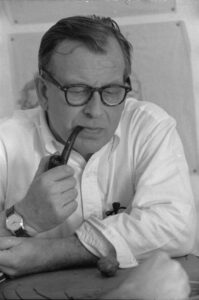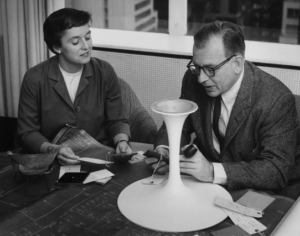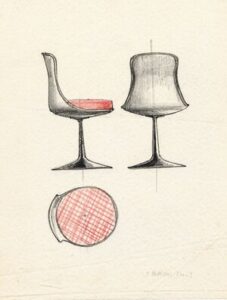He was considered the most revolutionary architect of his generation, a champion of neo-futurism; and yet people often criticized him vociferously for having “no identifiable style!”
Eero Saarinen (1910-1961), the renowned Finnish-American architect and industrial engineer of the twentieth century, took great pleasure and creative satisfaction in adapting his neo-futuristic vision to each individual client and project, which were obviously never the same. He never believed in the pluralism of styles. He was ‘the architect who saw the future’, it’s a documentary made on his life.
A troubled childhood
Eero’s father Eliel Saarinen was a well-respected architect in Finland at the time he was born. He was always surrounded by blueprints, scales, pens and creative people, and his own imaginary world. He felt he was destined to be an architect himself someday. Their family, however, shifted to United States of America when he was twelve. Eero had somewhat troubled childhood as he was dyslexic and overweight, often teased by his peers at school. Drawing, however, became both his language of expression and escape from harsh reality (remember the film ‘Taare zamin par?’).
A creative genius
Eero had only five-and-a half years of formal education by the time he was an adult. Everything changed when his father sent him to study for one year at the Academie de la Grande Chaumiere in Paris. From there he moved to Yale (USA) for his Bachelor of Arts (received in 1934). Eero worked for a long time (1938-1950) for his father’s company, Saarinen, Swanson & Associates. However, he always had an identity of his own. He won a competition “Organic Design in Home Furnishings” in 1940 with his innovative design of “Tulip Chair”. He established himself as an industrial engineer of repute with several hallmark designs, like the Grasshopper lounge chair, the Womb chair, the Womb settee, the Tulip group etc.
The visionary
Eero surprised even his father when both of them separately entered the same competition for the design of “Gateway Arch National Park”, known as the Jefferson National Expansion Memorial at that time. The organizers mistakenly sent the competition award to Eliel even though Eero had won it hands down! And this was just the beginning.
While still working with his father, Eero designed the General Motors Technical Center in Warren, Michigan, that won him international acclaim. It follows the rationalist design incorporating steel and glass, but with added accent of panels in two shades of blue. Several major American corporations then rushed to hire Eero to design their headquarters; John Deere, IBM and CBS being some of them.
Some remarkable creations
Eero followed a rationalist style of architecture, yet his interiors usually contained more dramatic sweeping staircases, and remarkable furniture designed by the maestro himself. Perhaps his most adored building has been the TWA Flight Center at John F. Kennedy International Airport. The main emphasis of his design practice was on utilizing new construction techniques as well as creating structures that had variety and visual effect. Some of his illustrious projects were:
- Swedish Theatre, Helsinki, Finland
- Kleinhans Music Hall, Buffalo, New York
- Center Line Defence Housing, Michigan
- Birmingham High School, Birmingham, Michigan
- MIT Buildings, Cambridge, Massachusetts
- Gateway Arch National Park, St. Louis, Missouri
- United States Chancellery Building, Oslo, Norway
- University of Chicago, Chicago
- TWA Terminal, New York City, New York
- Washington Dallas International Airport, Washington DC
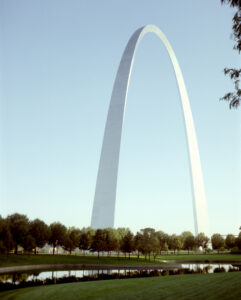
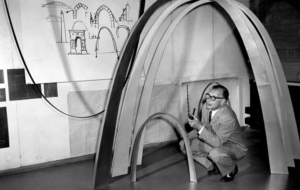
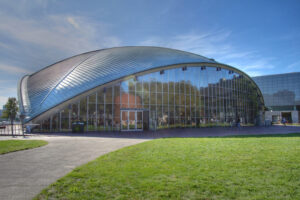
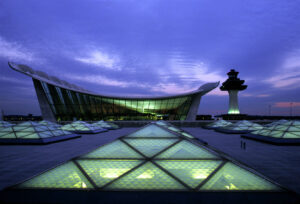
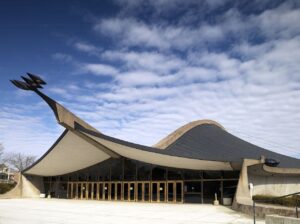
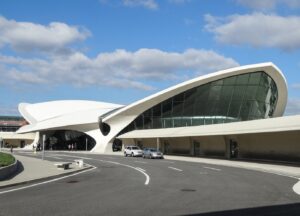
He was considered the most revolutionary architect of his generation, a champion of neo-futurism; and yet people often criticized him vociferously for having “no identifiable style!”
Eero Saarinen (1910-1961), the renowned Finnish-American architect and industrial engineer of the twentieth century, took great pleasure and creative satisfaction in adapting his neo-futuristic vision to each individual client and project, which were obviously never the same. He never believed in the pluralism of styles. He was ‘the architect who saw the future’, it’s a documentary made on his life.
Large swooping concrete roofs were a hallmark of Eero Saarinen’s architecture. Famous publications like the New York Times, PlayBoy, Look and Vogue described him as the most influential architect of his era. His sudden, early demise on September 1, 1961 at an age of only 51 years due to brain tumour sent shockwaves among his clients and followers. He designed for the posterity, many young architects still draw inspiration from his style and design concepts.
Nirman salutes the champion on his birth anniversary, the 20th of August.
Sources
https://en.wikipedia.org/wiki/Eero_Saarinen
https://www.britannica.com/biography/Eero-Saarinen
https://study.com/…/architect-eero-saarinen-biography-buildings.html
https://www.archdaily.com › ArchDaily › Articles › Spotlight: Eero Saarinen
https://www.somedayoneday.com/archive/tulip-chair-eero-saarinen
ABOUT THE AUTHOR
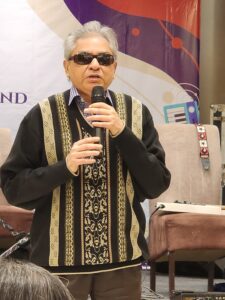
Sandeep Singh is an architect from IIT Roorkee.
Ten years after graduating, he lost his vision to genetic Diabetes.
He reinvented his career and turned writer.
He has authored two fiction books and writes blogs on
Architecture, Outsourcing, Safety and a variety of other
subjects for different organizations. He also chairs and runs two NGOs

